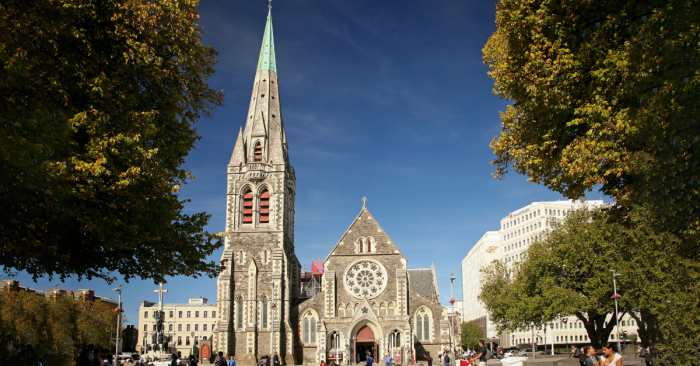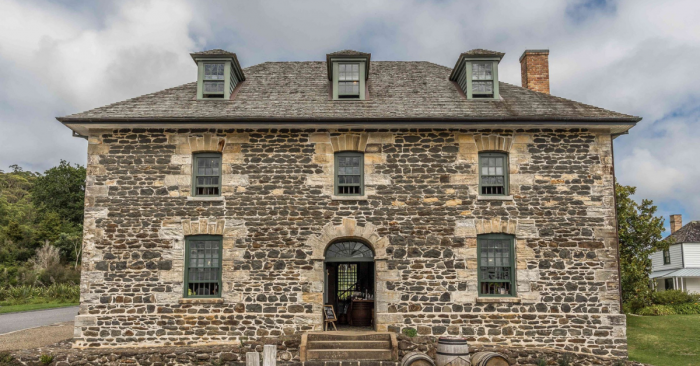Hit enter to search or ESC to close
4 March 2021
Protecting New Zealand's heritage buildings
Heritage buildings and historic sites need protecting too. So, what are some key considerations for owners of such properties when it comes to planning comprehensive insurance cover?
The building assets of commercial and private property owners, crown entities, churches and other organisations represent some of New Zealand’s most cherished historic places, while in our older towns and cities, heritage homes, retail establishments and other old buildings bring with them unique features, many of which make the process of insuring them more complex.
Crombie Lockwood Group Broking Manager, Steve Walsham, says that protecting historic buildings is a big consideration for church organisations – a number of whom Crombie Lockwood counts as long-term clients.
“Churches have many unique features that make the prospect of providing accurate insurance cover a challenging one,” says Steve.
“There are two parts to the conundrum: the building itself and the artefacts and artworks contained within. With most of our larger churches having been built to specifications in the late 1800s and early 1900s, if that same church was to be rebuilt today following an event such as an earthquake or fire, church organisations should consider what would be realistically practical to rebuild - Steve Walsham
“With churchgoing audience numbers having declined from the previous generation, would there be the need to build to the same footprint as the previous building? Would a 200 square metre building suffice as replacement for a 500 square metre building, and what might the wider impact of this be on the community? Insuring the building to the value of a more suitable replacement can, however, lead to potential claims issues in the event of a partial loss.
“Would there be the need to replace expensive stained-glass windows or other artistic features within the building, and how do you accurately value heritage items rendered in harder-to-source native timbers or Italian marble, for example? Similarly, how do you provide competent valuations for such material costs, or the cost of the time and skill required of an artisanal craftsperson to replicate them?”
Steve says that, generally speaking, church organisations can be asset rich, but lack liquidity. The professional valuation costs for a national asset portfolio that could number a thousand or more assets across the country – some potentially located in high seismic risk zones – become prohibitive for many church organisations.
Time is also a factor for such remediation projects, with the potential need for local government consents and Heritage New Zealand consultation to be completed before work can begin. If years pass between an event and the reinstatement work commencing, the value of the insurance cover might no longer accurately reflect real world costs when construction finally commences, meaning post-loss inflation costs would need to be considered in the overall insurance sum insured.
“Then, if you think of an example like an historic hotel or retail establishment, this could also present a need for extended loss of revenue/profit insurance if the building and the business that operates from it have to be closed for a significant amount of time.
“The subject of insuring historic buildings is an emotive and complex one for all concerned,” says Steve. But through dedicated expertise, solutions certainly can be found.

Work is underway to rebuild Christchurch's beloved landmark
An example of Crombie Lockwood’s successful capability in the heritage space – and with one of the most famous churches in New Zealand – is its work with the Christ Church Cathedral Reinstatement Project.
Work has commenced on rebuilding the Anglican Cathedral, which was severely damaged by the 2010 and 2011 Canterbury earthquakes. The complex project to rebuild the iconic cathedral is expected to take between seven and 10 years, and involves several stakeholders, including Christchurch Reinstatement Limited, Christchurch Reinstatement Trust, Church Property Trusts, The Anglican Church and Christchurch Council.
A specialist team from Crombie Lockwood worked with the project stakeholders to build a comprehensive insurance market submission detailing the project methodologies, identifying the major risk exposures and outlining how these risks are being mitigated.
“The length of the project presented a challenge for local insurers, as did the nature of the site until seismic strengthening has been put in place,” says Crombie Lockwood Construction Practice Leader, Mark Taylorson.
“Our team’s report included parameters for insurance cover that contained a unique insurance structure that had never been used on a New Zealand construction project before. This was achieved with help from Crombie Lockwood’s parent company Gallagher’s global network and the resultant international search for strong construction insurers capable of underwriting the project. This meant we were able to arrange favourable placement terms for the project.
“It was a fantastic result and, I believe, is a testament to the construction expertise that our team has both locally in New Zealand and through the capabilities of the wider Gallagher global network.”
While possibly New Zealand’s most high-profile reminder of the physical and emotional power of those catastrophic events a decade ago, Christchurch Cathedral is but one historic building which now needs to adhere to a strict new seismic strengthening regime.
For owners of older buildings, insurers must ascertain whether a building could be prone to suffering earthquake damage, which is defined as less than 33% of the new building standard. This applies to all non-residential buildings, irrespective of whether they are deemed an historic place or not.
The costs associated with strengthening buildings to 34% or higher of the new building standard can be prohibitive and might not be covered by some insurance policies. Many insurers are now much more cautious in their approach when it comes to heritage buildings. It’s a reminder that the Canterbury earthquakes have impacted property owners in every part of New Zealand.

Should Kerikeri's Stone Store ever require repair, modern materials and methods may need to be considered.
Crombie Lockwood Group Broking Manager – Corporate, Ani Te Whaiti, works closely with crown entity Heritage New Zealand Pouhere Taonga, as well as private property owners, helping format insurance programmes that provide cover for listed or heritage classified properties.
Ani says there are a number of considerations for heritage property owners when it comes to weighing up a potential rebuild, regardless of whether they are a crown agency, church organisation or commercial property owner.
“Firstly, property owners should be aware that most material damage insurance will include a clause that limits the insurance to replacement with modern materials and construction methods, which could become a significant factor in certain building reinstatement projects,” she says.
“Any reinstatement preferences need to be shared by the owner at the outset so the broker can explore options and formulate a valuation methodology. If the intention is to rebuild using modern materials the replacement heritage value needs to be assessed accordingly.”
For example, Ani says that native timber joinery such as kauri might be replaced by modern, widely available timber such as pine. Therefore, the valuation should be based on the cost to replace with modern available timber. The challenge is repairing a heritage building with modern materials while still maintaining the essence.
“The total loss circumstance, when the building is completely ruined is often the simplest scenario in terms of an insurance claim. Insurance will provide a cash settlement or a rebuild of a property that provides the same functional value but because the original building is destroyed, the challenge of maintaining the heritage ‘value’ is largely avoided,” continues Ani.
“Partial loss is a more common scenario and it presents some challenging questions for heritage building owners including the level of public interest and engagement with the property; and the implications of any bylaws.”
Ani says it is crucial for property owners to have an understanding of any local bylaw implications that might impact on rebuild or demolition work.
“Our larger city councils generally have heritage control information available on their websites which can provide property owners with accurate information,” she says.
“In Wellington, for example, resource consent may be required for alterations or demolition of buildings built prior to 1930. In Auckland, historic places need to be listed in the Unitary Plan, which contains special heritage overlay information.”
Ani advises that there will be differences between each region, but local authorities are commonly obliged to protect historic heritage buildings, sites or areas with acknowledged heritage value against inappropriate subdivision, use or development. Heritage New Zealand Pouhere Taonga is another helpful source of information and advice.
“Essentially, there are many challenges to insuring heritage buildings in New Zealand and owners need to be very clear on what they are seeking insurance for,” says Ani.
“Unfortunately, there is no silver bullet, but a brokerage that can demonstrate specialist knowledge and successful outcomes for clients in the heritage space should be a priority consideration for any heritage property owner.”
Insuring our heritage
WATCH. Construction insurance specialists Steve Walsham and Mark Taylorson discuss some of the challenges of insuring New Zealand's unique buildings, and the high profile Christ Church Cathedral Reinstatement Project.